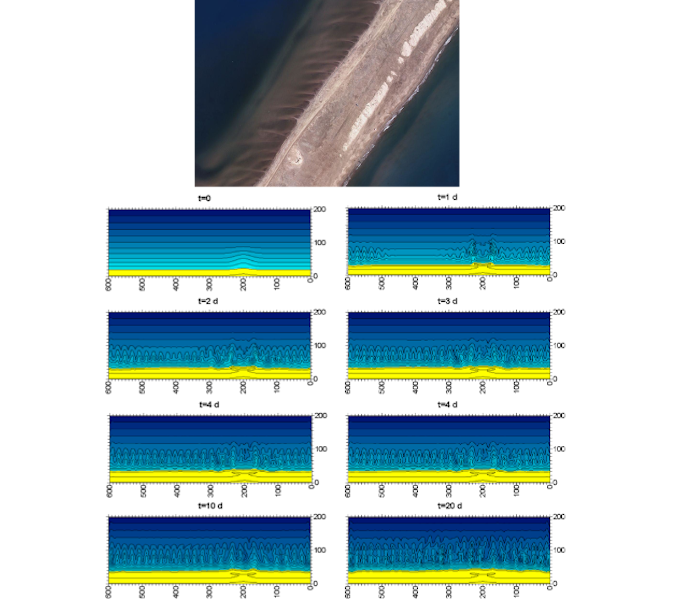New physical mechanism for the formation of transverse finger bars in beaches with abundant supply of sand
Jul 12, 2021
Albert Falqués and Francesca Ribas, from the group of Nonlinear fluid dynamics of the Physics Department, together with two other researchers from the UPC, have discovered a new morphodynamic instability mechanism that can explain the formation of alongshore-rhythmic systems of transverse finger bars that often develop at beaches with an abundant supply of sand, like those at El Trabucador beach, in the Ebro delta
Beaches sometimes exhibit sand ridges (bars) nearly perpendicular to shore that tend to be quite regularly spaced alongshore. Their spacing and cross-shore extent range from tens to thousands of meters. An example we are studying can be seen in the picture of the ICGC (upper panel), with alongshore spacings of about 20 m and located in the southern spit of the Ebro delta (north points upwards in the image).
Intriguingly, these bars develop preferably at beaches with an abundant supply of sand such as delta barrier beaches, barrier islands and estuaries, and there was not yet an explanation for this. Here we provide a plausible physical mechanism. Due to the sand excess, the bed in these beaches is very flat, the tendency for the sand to move downslope is very weak and the waves push the sand onshore. On the other hand, waves refract, that is, their crest tip on deeper water propagates faster than the tip on shallower water. As a result, they turn toward shallower areas and, thus, the onshore movement of the sand is deflected toward incipient shoals and accumulates there. This causes more intense wave refraction, which in turn brings more sand to the shallows, and so on. In this way, bars can form out of small random irregularities in bed level.
The mechanism is well captured by the nonlinear morphodynamic model Q2Dmorfo (built within the group) as can be seen in the lower panel, which shows the time development of the instability in the default simulation. Despite the model simplifications, both the spacings and the cross-shore extent are coherent with observations at El Trabucador beach.
A new morphodynamic instability associated with cross-shore transport in the nearshore
Albert Falqués, Francesca Ribas, Anna Mujal-Colilles and Carol Puig-Polo
Geophysical Research Letters 48, e2020GL091722; https://doi.org/10.1029/2020GL091722 - 14 June 2021

Share: